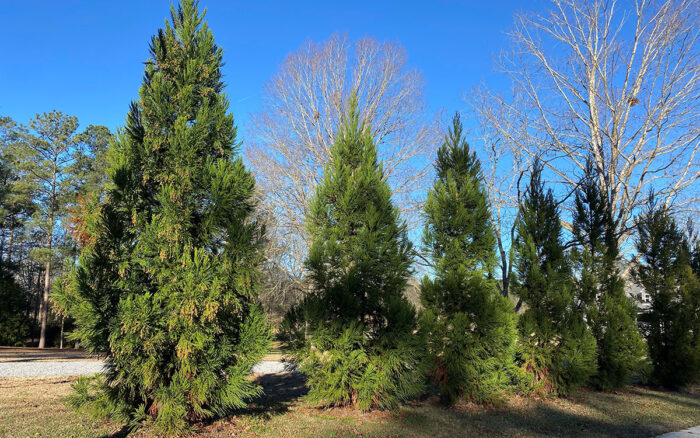
During the coldest months of the year in the South, when most of the leaves have fallen, it often becomes apparent where in your garden you could use some evergreen screens. It is always nice to have some privacy in your landscape oasis—just in case you have to run out to the chicken pen in your bathrobe. How long the screen needs to be, how tall you would like it, and how wide it can grow are important aspects to consider. The good news is that there are a lot of great plants out there ready to block your neighbor’s view of you and your view of the neighbor’s unfinished shed.
‘Radicans’ Japanese cedar
(Cryptomeria japonica ‘Radicans’, Zones 5–9)
Looking for a big screen? This Japanese cedar is an excellent choice. Eventually reaching up to 40 feet tall and 20 feet wide, it is a quick grower. The evergreen branches are soft instead of prickly like other conifers, and it adds a great texture to the landscape. In full sun, ‘Radicans’ does turn a soft bronze color during very cold weather, but usually it recovers its dark green hue in early spring.
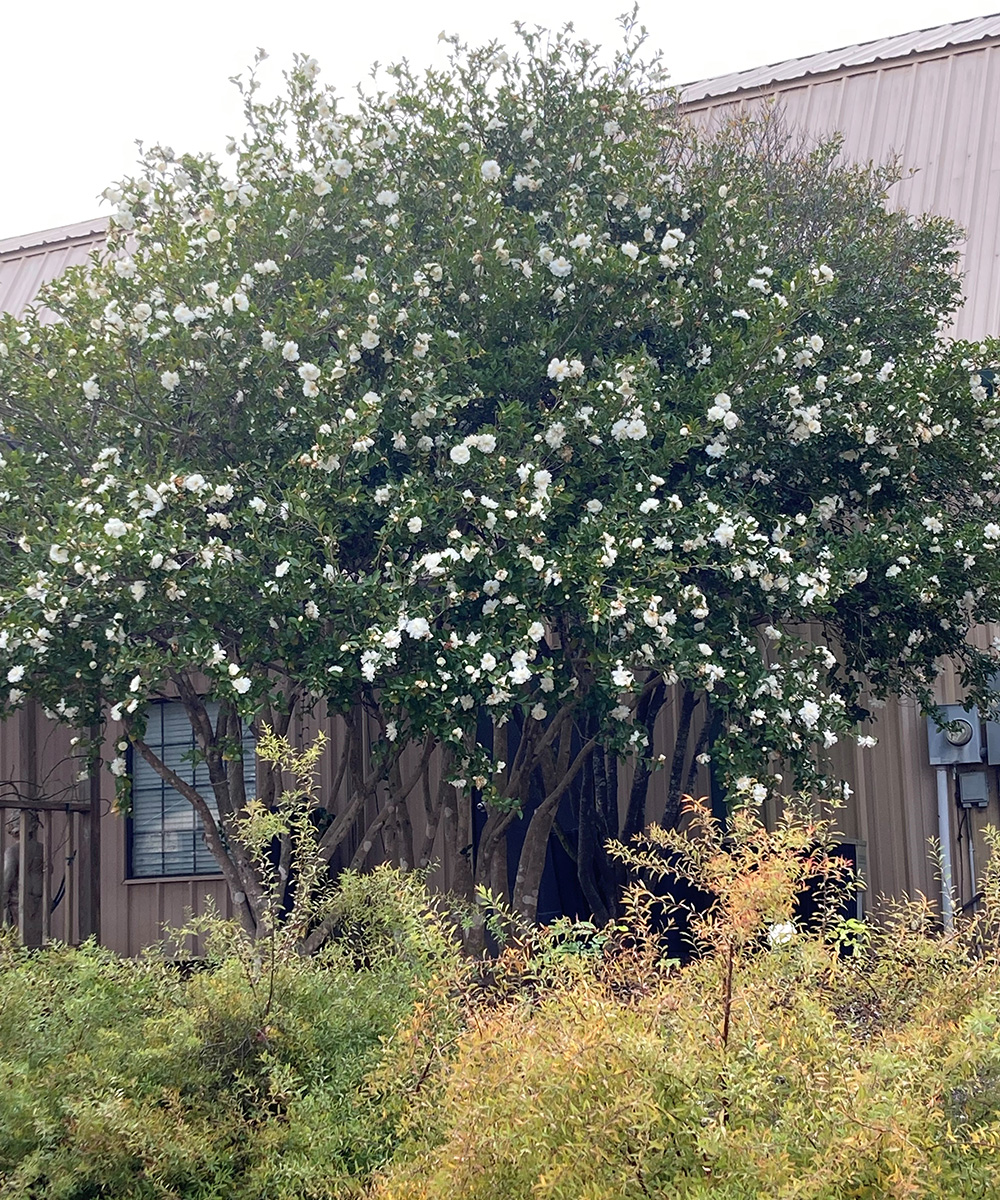
Sasanqua camellia
(Camellia sasanqua and cvs., Zones 7–8)
Sasanqua camellias can get surprisingly large in a surprisingly short period of time—plus they flower. Admittedly, they do not grow as quickly as some plants, but some cultivars are much faster growers than common camellia (C. japonica and cvs., Zones 7–8), the state flower of Alabama. The selection ‘Mine-no-yuki’ is a beautiful white flowering shrub. Ours reached 20 feet tall in about 15 years. Nearly as wide as it is tall, these shrubs thrive in full sun once established and are easy to prune into a smaller size if needed.
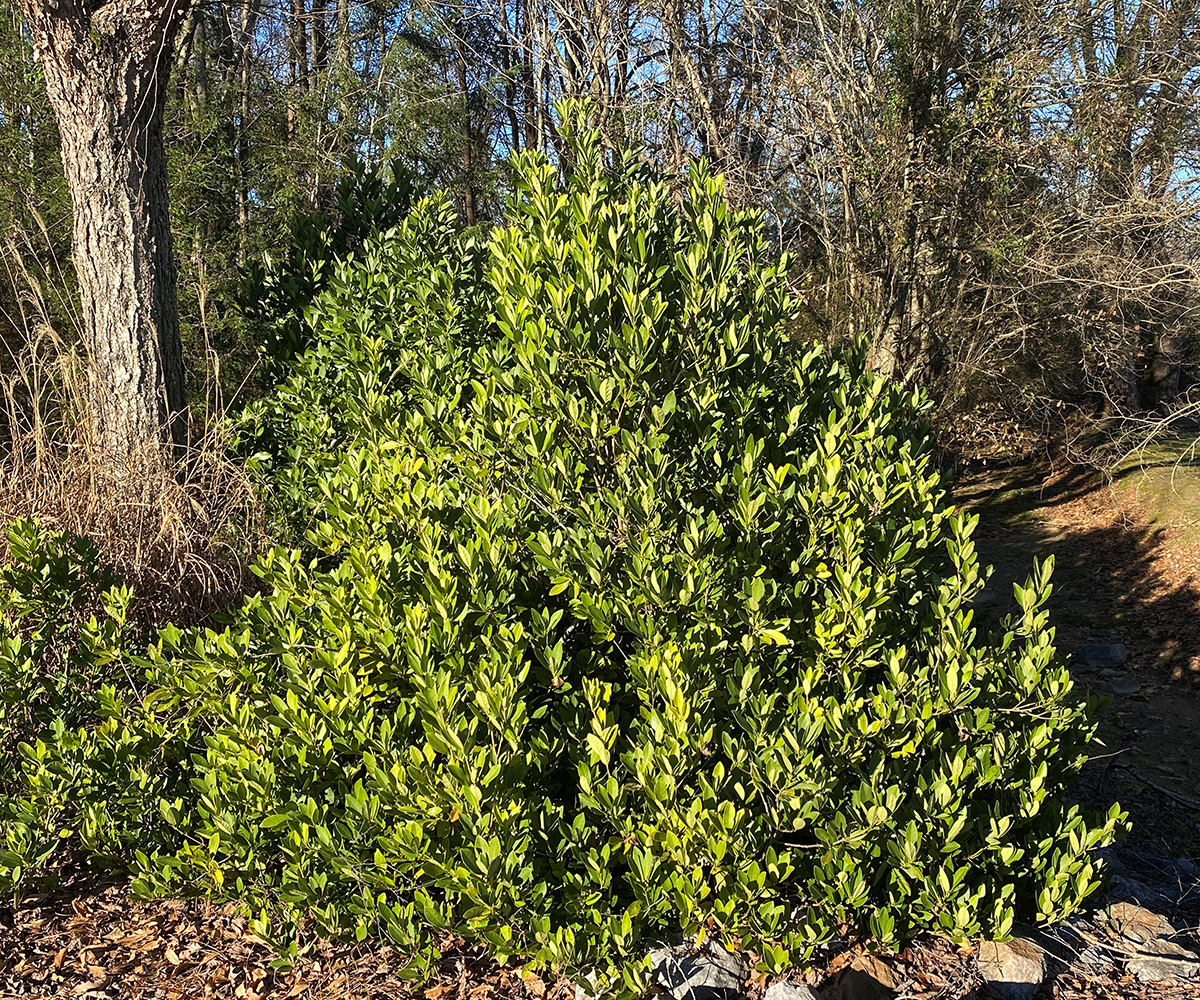
Yellow anise
(Illicium parviflorum and cvs., Zones 6–10)
This evergreen multistemmed shrub reaches 15 feet tall by 10 feet wide, making it an excellent choice for screening. The fragrant foliage, which gives it the common name anise, is not attractive to deer. In fact, it is slightly poisonous, and the weird seedpods it produces should not be used as a spice. It grows in full sun to part shade and gains size very quickly, creating a lot of cover in just a couple of years.
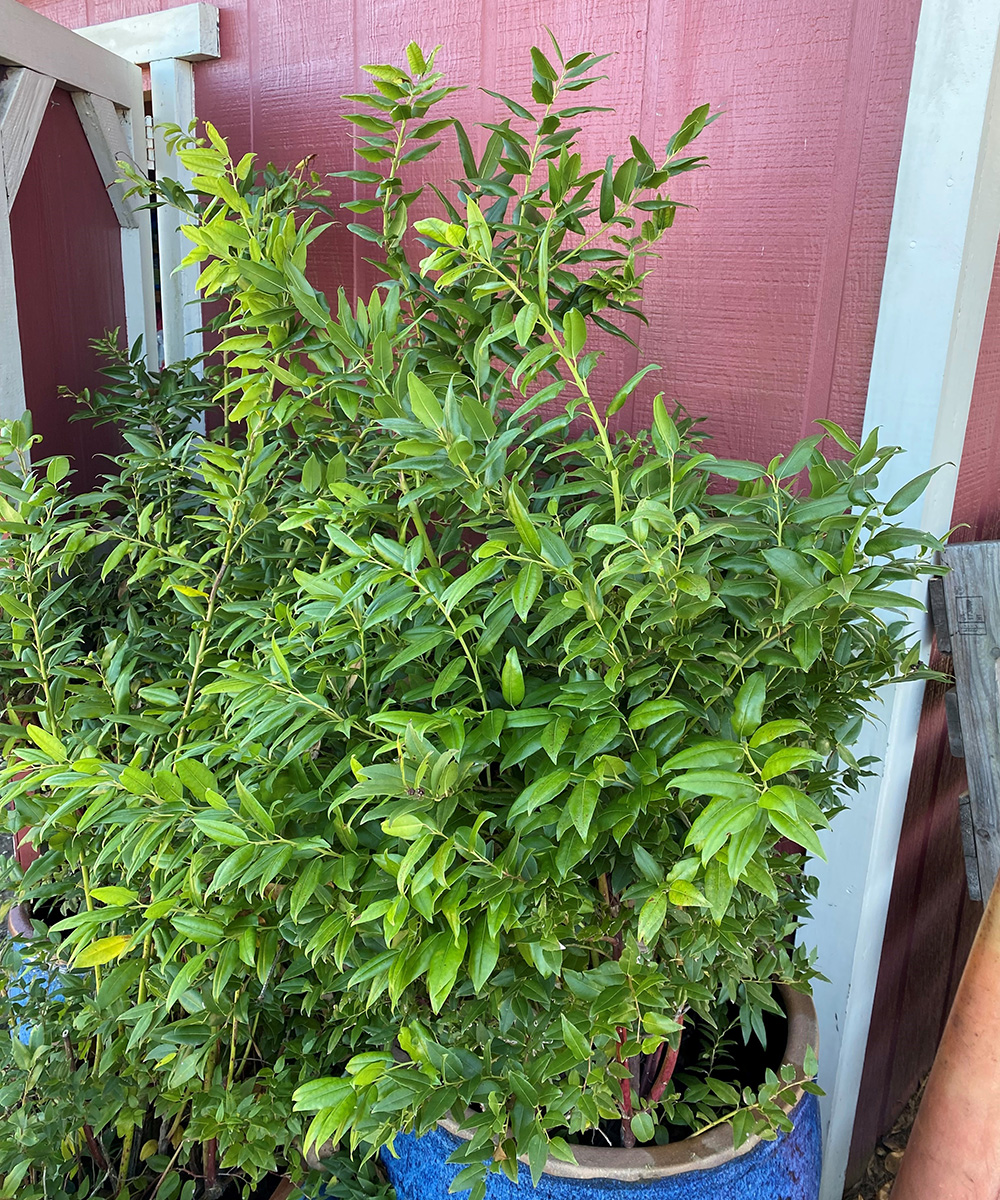
Leucothoe
(Agarista populifolia, syn. Leucothoe populifolia, Zones 7–9)
This hefty evergreen shrub grows in a lovely vase shape, narrower at the bottom and arching out as the branches go up. It gets to about 10 feet tall and 8 feet wide. As its multiple stems grow straight up and arch from the center, it looks similar to the form of a giant grass. In early spring, small sprays of white bell-shaped flowers appear at the top of the branches. New growth in the spring is bronze colored. It grows well in full sun or quite a lot of shade. Pollinators love this plant, while deer will wisely avoid it—it is reported as poisonous as well.

Wax myrtle
(Myrica cerifera and cvs., syn. Morella cerifera, Zones 7–10)
Wax myrtle is a broadleaf evergreen with small soft leaves and gray-blue berries along the branches. A very quick grower, it can be a little messy and may need directing with a bit of pruning. It is best as a screen that can be left “natural,” since it can sucker and spread out. It will grow in full sun to partial shade with wet soils and where water stands. We have learned that it is the first plant to recover along the Gulf Coast after a hurricane has blown everything else over.
‘Chindo’ sweet viburnum
(Viburnum awabuki ‘Chindo’, syn. V. odoratissimum var. awabuki ‘Chindo’, Zones 7–10)
This dense evergreen shrub is a screen-lovers dream with its large, shiny, dark green leaves. Mostly an upright grower, it stands taller than it is wide, at about 15 feet tall and 8 feet wide. An excellent choice for full sun or partial shade, ‘Chindo’ is drought tolerant but can also stand periods of wet soil.
Once you choose the view you want to hide, measuring is important. Shrubs in nursery containers can be deceptively small. Be sure to give your screening shrubs space to accommodate their mature size. As soon as you make your selection, get busy planting; winter will be over quickly enough, and you do not want to run out of planting time.
—Jason and Shelley Powell own and manage Petals from the Past, a garden center in Jemison, Alabama.

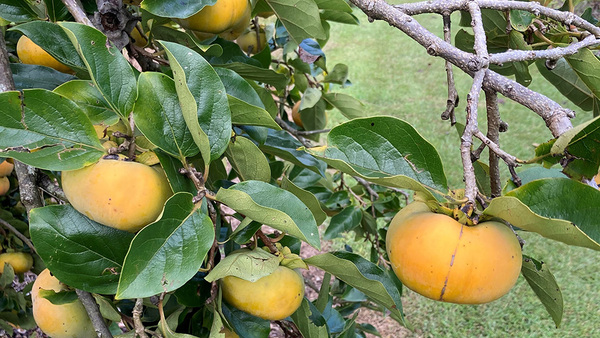

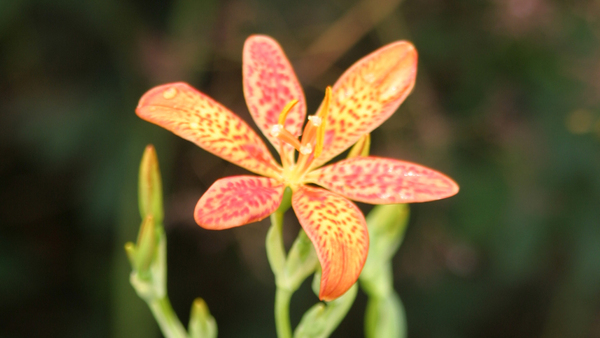
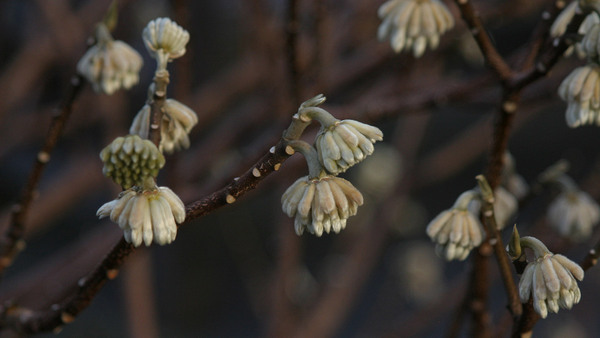












Comments
Log in or create an account to post a comment.
Sign up Log in